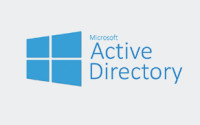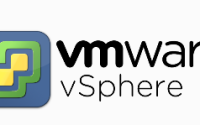Windows / System Administration Interview Questions – Part 1
A quick overview of some of the most common System Administration Interview Questions -
What is an operating system?
Operating system works as an interpreter between computer Hardware and application. Operation system works as a user interface.
Describe Operating System
A type of software which is use to manage user and hardware is called as operating system.
O.S establishes the communication between hardware and application software.
System file of DOS – i/o.sys, msdos.sys, command.com.
Kernel file:- Particular os file which directly communicates with the hardware of system.
Kernel file of DOS:- i/o.sys, msdos.sys
Windows:- kernal32.dll
Shell file:- Particular os file which act as interpreter between user and hardware of system. It means it converts user level language into machine level language.
Shell file of Dos:- command.com
Windows:- xplorer.exe
Windows XP:- Windows Experience Professional.
Which boot files required to boot system?
NTLDR – loader file
NTDETECT.COM – recognizes hardware
BOOT.INI – OS menu
BOOTSECT.DOS – alt boot sector
NTOSKRNL.EXE – kernel
HAL.DLL -
SYSTEM32\CONFIG – registry
SYSTEM\32\DRIVERS\*.SYS – drivers
Types of Operating systems?
There are two types of operating systems
COS: Client Operating System as for example- Windows XP, Windows 7, 8
SOS: Server Operating System as for example- Windows 2003, 2008 R2, 2012.
What is server OS?
Servers are computer that provides the services. Single time multiple people can able to access it.
As for Example:-
- DNS Server
- WINS Server
- DHCP Server
- RAS Server
- VPN Server
Explain the differences between FAT/NTFS?
there is major difference are available between FAT and NTFS file systems
Such as:
FAT:
FAT Stands for File Allocation Table
There are three categories in FAT file system.
- FAT
- FAT-16
- FAT-32
In FAT Not up to folder level security is available
Compression option is not available
Encryption Option is not available
Disk Quota Option is not available
FAT supported by all of the Microsoft Based Operating Systems.
NTFS:
NTFS stands for New Technology File Systems
There are three categories in NTFS file systems
- NTFS 4.0- NT Operating Systems
- NTFS 5.0- 2000 Operating Systems
- NTFS 6.0- 2003 Operating Systems
In NTFS up to File level security is available
Compression option is available
Encryption option is available
Disk Quota Option is available
NTFS supported by only limited Microsoft Based Operating System
What is Active Directory?
Active Directory is the main concept of Windows 2000/2003 Network. It stores all of the information about the whole network such as users, printers, computers etc.
What is tree?
A group of domain is called tree and sharing a contiguous Name Space.
What is forest?
A group of tree is called forest and does not sharing a contiguous name space but sharing a common configuration (Schema).
Difference between D.C. and A.D.C.?
D.C. stands for Domain Controller and A.D.C. stands for Additional Domain Controller.
A.D.C. is a backup of D.C. Only one different is available between D.C. and A.D.C. i.e. – Operation master Role. On D.C. all of five Operation Master Roles are available-
1. Schema Master
2. Domain Naming Master
3. RID Master
4. PDC Emulator
5. Infrastructure Master
But on A.D.C. only Three Operation Master Role are Available:
1. RID Master
2. PDC Emulator
3. Infrastructure Master
What is the benefit of Child Domain?
There are many benefits of Child Domain Such As:
1. Security Boundary
2. Administrative Overhead Low
3. Network Traffic Low
What is Group?
Group is a collection of user account. It provides the simplified administration in the network.
What is OU?
OU stands for Organizational Unit. On OU we define group Policy in the network. Group policy is basically assigned on active directory container i.e. Site, domain, OU. Whenever we want some users then we put that user in the OU and assign the appropriate Group Policy on that OU.
What is Group Policy?
Group Policy provides the stream line access to all of the users in the network. Group policy is basically assigned on active directory container i.e. Site, Domain and O.U. When ever we want some users in the network do not use shut down the system, do not use run command, do not use Control Panel, then we put that user in the OU and assign the appropriate Group Policy on that OU.
Difference between permission, rights and policy?
Permission: permission is basically assigned on network resources as for example – file, folder, share folder, printer.
Right: Right is basically assign to users and groups.
Policy: Policy is basically assigned on active directory container i.e. – Site, Domain, OU.
What is Default Gateway?
Default Gateway is the IP address of router in the network. Whenever any clients want to go to another network that query will forward to default gateway.
What is site?
A site is a geographical area where all of the domains are available. Site manages the replication traffic between two or more different sites in the network.
What is SCSI?
SCSI stands for Small Computer System Interface. In SCSI the rate of data transmission is fast. SCSI Hard Disk Speed R.P.M.
It is fast in SCSI Data Transmission speed is 320 MBPS in the Network. In SCSI Controller We can connect Maximum 15 Physical Devices in the System.
What are A-Host Record and PTR Record?
A record is also called host record. This record is basically created in forward lookup Zone
PTR record is also called a Pointer record. This record is basically created in reverse lookup Zone
IP Address Range/Classes?
Class A – 0 – 126(127 is reserved for Loop back)
Class B – 128 – 191
Class C – 192 – 223
Class D – 224 – 239
Class E – 240 – 255
What is DNS? Why it is used? What is “forward lookup” and “reverse lookup” in DNS? What are A records and mx records?
DNS is domain naming service and is used for resolving names to IP address and IP addresses to names. The computer understands only numbers while we can easily remember names. So to make it easier for us what we do is we assign names to computers and websites. When we use these names (Like yahoo.com) the computer uses DNS to convert to IP address (number) and it executes our request.
Forward lookup: Converting names to IP address is called forward lookup.
Reverse lookup: Resolving IP address to names is called reverse lookup.
‘A’ record: Its called host record and it has the mapping of a name to IP address. This is the record in DNS with the help of which DNS can find out the IP address of a name.
‘MX’ Record: its called mail exchanger record. Its the record needed to locate the mail servers in the network. This record is also found in DNS.
What is DHCP? Why it is used? What are scopes and super scopes?
DHCP: Dynamic host configuration protocol. Its used to allocate IP addresses to large number of PCs in a network environment. This makes the IP management very easy.
Scope: Scope contains IP address like subnet mask, gateway IP, DNS server IP and exclusion range which a client can use to communicate with the other PCs in the network.
Superscope: When we combine two or more scopes together its called super scope.
What is reservation in DHCP?
Reservation is basically used in DHCP Server. When Ever we want this computer is always received this IP address from DHCP Server in the network, in the network, in that case we create a reservation in DHCP Server of that particular computer in the network.
What is IPCONFIG command? Why it is used?
IPCONFIG command is used to display the IP information assigned to a computer. From the output we can find out the IP address, DNS IP address gateway IP address assigned to that computer.
What is APIPA IP address? Or what IP address is assigned to the computer when the DHCP server is not available?
When DHCP server is not available the Windows client computer assigns an automatic IP address to itself so that it can communicate with the network computers. This ip address is called APIPA. ITs in the range of 169.254.X.X. APIPA stands for Automatic private IP addressing.
More questions in Part 2 which follows…



Many thanks posting this. I have been trying to find this data. Superb info I am going to look for more info